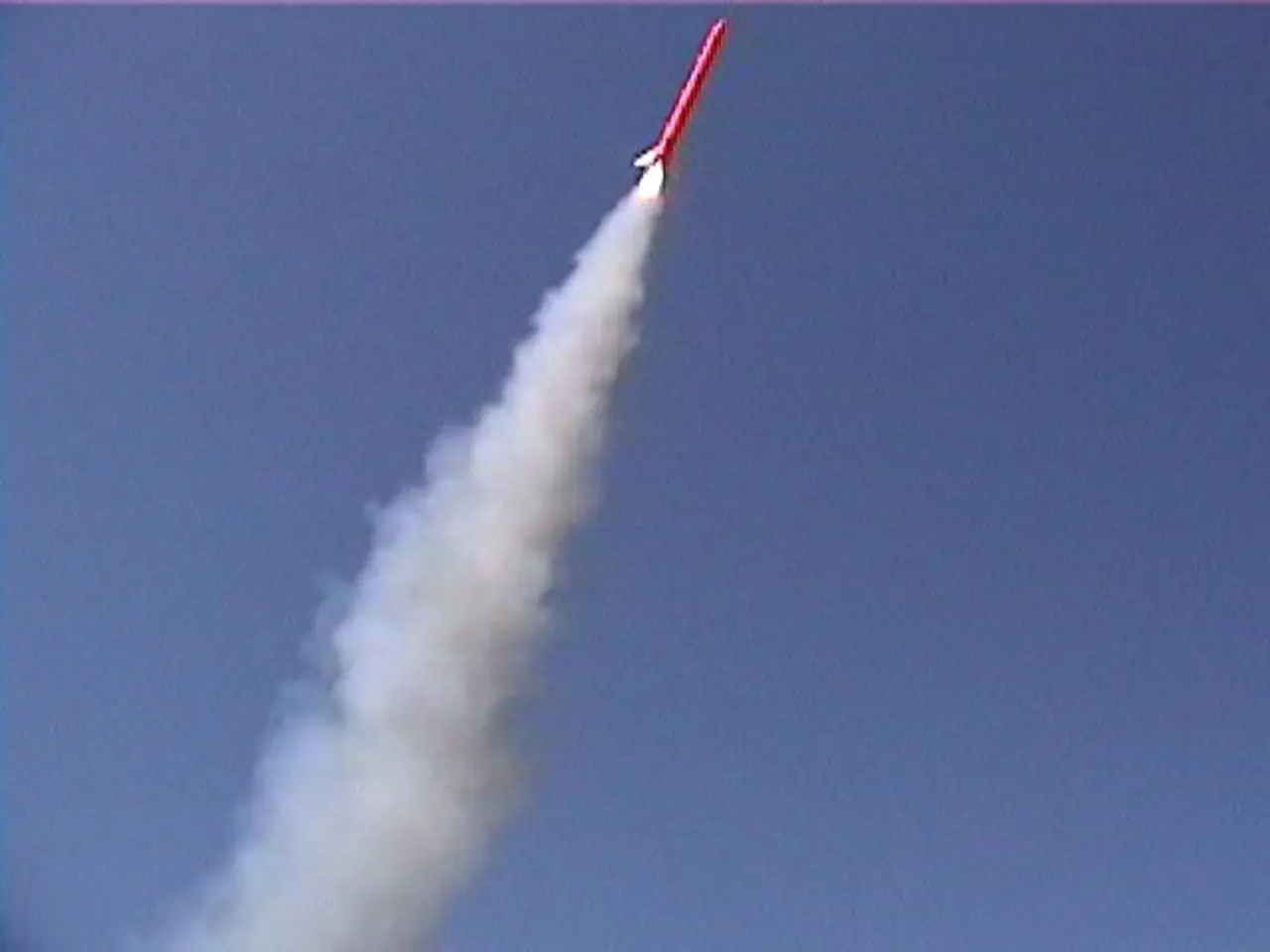Thermodynamics in Action: Rocket Science's Key Principle
In the realm of aerospace engineering, thermodynamics plays a pivotal role, particularly in rocket science. This branch of physics focuses on heat, energy, and their transformations, and it is a lifeline for engineers working on rockets.
Propulsion is a key function in rockets, enabling vehicles to break free from Earth's gravitational pull. Energy in rockets is converted from chemical energy stored in propellant into kinetic energy during combustion. The Brayton Cycle, one of the most significant thermodynamic cycles relevant to aerospace engineering, describes how gas expands and contracts in a continuous loop, which is especially important for turbojet and rocket engines, as it describes combustion and the generation of high-pressure gases for thrust.
Understanding entropy, another important concept in rocket science, is crucial. Entropy describes the natural tendency of systems to move toward disorder, and it affects how energy is converted into useful work in rocket systems. Entropy can lead to more effective designs that minimize heat loss and improve propulsion efficiency.
Engineers must optimize air and fuel mixture ratios for maximum energy transfer and stable flames. Maximizing efficiency is crucial for reducing costs in future rocket development. The goal is to reduce entropy to improve propulsion efficiency and achieve a high specific impulse, a measure of the efficiency of rocket propulsion. Achieving higher specific impulse means rockets can travel farther on less fuel.
Scientific exploration faces many challenges, with rockets needing to operate effectively under extreme conditions. Navigating new frontiers relies on advanced engineering solutions. Every design choice can lead to either success or failure in achieving the desired thrust. Improved designs depend on the careful application of thermodynamic principles to enhance performance and safety.
Heat transfer occurs during launches, affecting overall performance. Materials used must withstand extreme temperatures while remaining lightweight. Understanding the principles of heat transfer is vital for ensuring spacecraft longevity and protecting sensitive equipment during flight. Innovative designs can help manage heat transfer better, with advanced materials being developed to withstand intense temperatures and pressure.
Heat transfer during ascent must be managed carefully to prevent damage to components. Simplifying complex ideas makes them accessible, paving the way for new generations of scientists. Every new leap forward in rocket science relies on the insights gained from understanding how energy moves and changes form.
As we venture into the cosmos, precise calculations depend on the careful application of thermodynamic principles to enhance performance and safety. The development of greener fuels and electric propulsion systems is underway, with the potential for higher efficiency in future space missions. Maximizing efficiency is crucial for reducing costs in future rocket development.
The unique characteristics of each thermodynamic cycle influence overall rocket performance. Thermodynamics will continue to play an essential role in rocket science, with new research focusing on improving energy transfer during launches. Learning from past missions helps to shape new technologies that will propel humanity into the cosmos.
Engineers strive to minimize losses while maximizing the useful work produced by the rocket. Every element of design requires a thoughtful approach to energy use. Gas dynamics come into play in rockets, as gases expand rapidly and create pressure differentials that are essential for movement.
Propulsion technologies could also move towards hybrid systems, combining traditional and electric methods. Every design choice can lead to either success or failure in achieving the desired thrust. The rocket engine cycle analysis was developed primarily by German engineer Eugen Sänger and further advanced by American rocket scientists like Wernher von Braun; important rocket engines using this analysis include the Space Shuttle Main Engine (SSME) and the Rocketdyne F-1 engine.
The goal is to reduce entropy to improve propulsion efficiency and achieve a high specific impulse. Combustion efficiency is another critical factor, with inperfect combustion wasting fuel and reducing thrust. Engineers aim to push the limits of current thermodynamic cycles.
Innovations in cooling systems can protect sensitive equipment during flight and mitigate risks associated with combustion instability in engines. The unique characteristics of each thermodynamic cycle influence overall rocket performance. Improved calculations become increasingly vital as we venture into deeper space exploration.
Future explorers will depend on these advancements for successful journeys. Thermodynamics will influence design choices for missions to Mars, asteroids, or beyond. Understanding entropy in rocket systems will also be important, leading to more effective designs that minimize heat loss.
As we continue to push the boundaries of space travel, the role of thermodynamics in rocket science will remain indispensable. Every new leap forward in rocket science relies on the insights gained from understanding how energy moves and changes form. The future of space exploration is bright, and thermodynamics will undoubtedly play a significant part in that future.
Read also:
- Peptide YY (PYY): Exploring its Role in Appetite Suppression, Intestinal Health, and Cognitive Links
- Toddler Health: Rotavirus Signs, Origins, and Potential Complications
- Digestive issues and heart discomfort: Root causes and associated health conditions
- House Infernos: Deadly Hazards Surpassing the Flames








